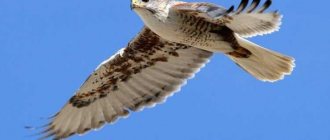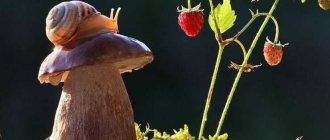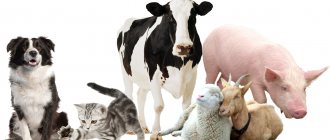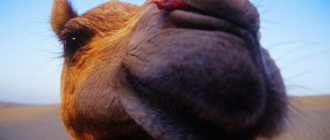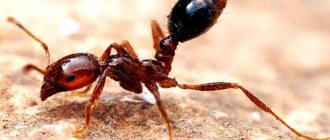Review author: “ZooVita”
Trout fish is a type of small and medium-sized fish from the salmon family with delicious and tender pink meat. In many of its properties, it is similar to ordinary salmon and is valued in cooking no less than salmon.
River trout fish is used to a greater extent in the food industry, as it is easier to grow on farms. But it is the marine species that are considered a true delicacy, since their meat contains more minerals and trace elements.
general description
Representatives of the trout family have a powerful spindle-shaped body with a relatively medium-sized truncated head.
They can be distinguished from other types of fish by numerous spots on their body. The predator's slippery body is covered with small, dense scales and a layer of mucus. The color of the fish is not constant; it can change greatly depending on the color of the bottom, depth and condition of the water. For example, in water with a high lime content and a light rocky bottom, lake trout are usually found, mostly light in color, with almost no pronounced spots or stripes on the body. In peat bogs or silted reservoirs, fish are found that are darker and have a pronounced pattern.
Predators have acute vision, allowing them to see even in low light conditions. This feature was probably inherited from lake species, often living at great depths.
On a note! In addition to the ability to see well and distinguish colors, trout vision is surprising with a rare feature. During hunting, the fish is able to simultaneously focus its vision on two objects. This ability makes it easier to grab a prey among a flock of fry that move chaotically in case of danger.
This fish is quite voracious. At a comfortable temperature and clean water, it feeds intensively all year round. The amount of food eaten per day can reach up to 2/3 of its own weight. Larvae, plankton, fry, insects, crustaceans—this is what trout that have not yet reached large sizes eat.
As it grows and matures, the predator's menu is dominated by fry, amphibians, and sometimes small rodents. In calm weather, fish can be seen jumping out of the water, grabbing insects flying low or floundering on the surface. Their victims are often butterflies, grasshoppers, flies, mosquitoes and numerous other insects.
Why do river trout have white meat?
If we look at it as a whole, we can determine that one trout has predominant dark tones, while the other has predominant light tones. This depends on the food that the fish eats, the transparency and composition of the water of the reservoir in which it lives, the time of year and, in some cases, the color of the bottom.
Interesting materials:
Who are serfs and landowners? Who are managers? Who are peacekeepers and what do they do? Who are Nicolaus Copernicus and Giordano Bruno? Who are the guardsmen and what did they do? Who were the first Romanovs? Who are Polkilo and Lyalya? Who are middle managers? Who are the Whisperers in The Walking Dead? Who are the foremen in history?
Trout species
Most of the species are present in three genera of the salmon family (Salmo).
The most famous types:
- lake trout (rainbow, brown trout);
- brook (variegated);
- Adriatic;
- Sevan;
- mykizha;
- Karelian;
- marble;
- Amudarya;
- gold;
- Italian;
- silver loach;
- Turkish flathead;
- Siberian trout (local name for grayling and lenok, living in the rivers of Siberia).
Reproduction and lifespan
Coral trout.
During the spawning season, lake trout move upstream in the river. In some cases, trout do not leave their pond and lay eggs directly in it.
The emerging young either remain in the river or go downstream into the reservoir. If the trout do not leave the river, they join the brook trout population, which is considered the most beautiful. Brook trout live only in cool, clear waters. Under good living conditions, she gains up to 5 kilograms in weight.
The lifespan of trout is also influenced by habitat, food and species. For example, the life expectancy of trout living in lakes is longer than that of their river counterparts. Lake trout lives for several decades, and river inhabitants live up to a maximum of 7 years. Long-lived trout can weigh up to 30 kilograms.
Trout is the owner of the most delicious meat.
Where is trout found in Russia?
This type of salmon can be found today in many reservoirs of Russia:
- numerous lakes of Karelia;
- freshwater reservoirs of the Kola Peninsula;
- Lakes Onega and Ladoga;
- artificial ponds within the boundaries of many large cities, specially stocked with rainbow trout mainly for sport fishing.
The fish is also widespread in the territory of the former USSR republics in Asia. For example, in the large alpine Lake Sevan, which is located in Armenia, there is a unique local species - Sevan trout, often used in national dishes.
Favorite Habitats
The favorite habitat of the river predator is areas near seething rifts.
All types of trout love clean, cold water, however, they are found, albeit infrequently, in fairly warm water layers. This happens on large, deep-water lakes, where the surface layer of water is constantly saturated with air due to wind and waves. It will not be possible to find this fish in shallow, warming lakes and swampy lowland rivers.
The favorite habitat of the river predator is areas near seething rifts. There the fish finds comfortable conditions for itself and picks up food brought by the current. On flat sections of the river it often chooses cluttered areas - large stones, fallen trees, uneven terrain.
On warm, clear days, the fish become inactive. The onset of light bad weather awakens the predator. This is the best time to catch it both on the river and in reservoirs without a current.
Breeding in fish farms
Most often, rainbow, amber and brook trout are kept in artificial reservoirs.
This tasty and expensive variety of salmon is of interest to fish farms and nurseries. Of all the species, only a small part is suitable for cultivation.
Keeping in cages
Since the cages are set up in a natural reservoir, the fish are provided with comfortable living conditions.
Keeping them in special cages is considered the most profitable way of growing. The cages are placed in a certain part of a suitable body of water. It's quite simple to do:
- In pre-marked places, wooden or metal stakes are driven into the bottom of the reservoir, which define the boundaries of the cage and will later serve as a frame.
- A strong fine-mesh mesh is stretched over the stakes. The size of the cell is selected so that trout fry cannot leave the cage area, but at the same time the fry of other fish and small aquatic life can easily penetrate.
- The diameter of such a structure is usually 15-20 meters, and the depth is about 5 meters. The bottom of the cage is located approximately one meter above the bottom of the reservoir.
Contents in the pond
To supply air to stagnant and freezing reservoirs in winter, special air supply devices (aerators) are used.
Reservoirs, both natural and artificial, are suitable for growing trout in a pond. Moreover, natural ponds, in some cases, are inferior to artificial reservoirs specially dug for growing fish. This is explained simply:
- In a wild pond it is more difficult to create the necessary conditions for the life of fish that require clean water.
- A large natural reservoir cannot be completely cleared of trash fish and excess vegetation.
- On private property it is much easier to protect a pond from poachers.
The advantage of a natural reservoir is only the supply of natural food, which allows partial savings on feed. In a body of water of any type there must be at least a slight current that promotes constant mixing of oxygen in the water.
Adler breed.
Work on creating the breed in trout farming began back in 1975. The initial forms were steelhead salmon and rainbow trout. The main selection trait is the early maturation of spawners during the spawning season. Breeders carefully selected individuals that matured at the beginning of the third ten days of November. When forming the broodstock, methods of mass selection and family selection were used. As a result, a breed of trout was created, called Adler. It is distinguished by early maturation: mass spawning of spawners occurs in November. The advantage of early spawning, combined with rapid growth and high fertility, significantly increases the commercial value of this breed, as it allows you to reduce the time for growing portioned trout and fish in large quantities by 2.0-2.5 months, as well as obtain a greater yield of marketable fish and edible caviar per female compared to other trout species. In addition, Adler trout is well adapted to intensive biotechniques of breeding.
Large juvenile Adler trout can be used for stocking in April-May cage lines in cold-water trout farms with variable temperature conditions, which is the main prerequisite for the accelerated cultivation of commercial trout in farms of this type. Also, Adler trout can be successfully used in mariculture, since fingerlings and yearlings of this breed, due to their size and body weight, are most suitable for stocking sea submersible cages in the autumn-winter with the aim of obtaining marketable products in the spring of next year.
Due to the high level of general combinative ability, Adler trout can act as a successful crossbreeding component to obtain productive crosses. The widespread introduction of Adler trout crosses with other breeds into commercial trout farming makes it possible to increase its economic efficiency.
Salmon and trout, what's the difference?
Most often, this question is asked when comparing salmon with large species of trout (rainbow, brown trout), since there are indeed some similarities between the fish. Both species belong to the “red fish” of the salmon family and are valued for their excellent gastronomic qualities and beautiful pink meat. However, it is not difficult to distinguish these fish:
- Salmon surpasses its opponent in size; its adult specimens often reach a length of 1 meter, and sometimes specimens are found under one and a half meters. The largest trout of all its existing species is smaller in size and never reaches a meter in length.
- The salmon's head is larger and has a more pointed snout.
- The color of salmon is lighter, silvery with dark small spots and there is no beautiful “signature” pink stripe along the body, like trout.
- Salmon fins are larger and elongated.
- Salmon scales are much larger.
- Trout meat has a reddish tint; in salmon it is closer to orange.
- When salted, its meat is softer, but less fatty. However, if you use first-class raw materials for salting trout, you may not be able to distinguish it.
During heat treatment, the red-pink color of salmon meat is preserved, while that of trout becomes less saturated.
Use in cooking
Red sea trout meat is in great demand, in contrast to pink and white meat. It has a unique fresh smell, somewhat reminiscent of cucumbers, a little fresh and characteristically “fishy”. The fillet tastes different - sweetish-salty, with a slight subtle aftertaste.
Such meat is stewed, fried, boiled, baked, marinated and even served raw. In Japan, it is used to make the most delicate sashimi - raw red meat, served separately. In the Caucasus, they prefer to bake fish with a sweet and sour pomegranate sauce.
Advice! If the trout was caught in the wild, it must be thoroughly processed before cooking. Stream and lake parsley are a source of intestinal parasites.
What is healthier: salmon or trout?
In terms of fat content, trout is classified as a dietary fish; it contains approximately one and a half times fewer calories than salmon. People watching their own weight should take a closer look at this fish. Despite the high fat content of salmon, its meat is rich in polyunsaturated fatty acids, in particular Omega-3. As you know, Omega-3 is a rather rare substance that our body cannot synthesize on its own.
On a note! Salmon dishes are very useful for people who have problems with the cardiovascular system, as well as for all older people.
It is impossible to say categorically which fish tastes better, trout or salmon. Here, as they say, there are no comrades according to taste. You just need to try and decide for yourself. Both representatives of salmon are highly valued in cooking and are suitable for preparing almost any fish dish. It is believed that trout has more tender meat and a more subtle, refined taste than salmon. But after freezing, it can easily lose these properties. It is better to buy it chilled or fresh.
One of the advantages of salmon is its large bones, which are easily removed from the meat.
Prevalence
Living in close family proximity makes it difficult to determine their affiliation and causes confusion and controversy among scientists.
Read here Tuna fishing: choice of gear, fishing features, bait, groundbait and tips for catching from the shore and in the open sea (110 photos)
Trout swims in many places, but more often it ends up on the table in those houses that are located closer to its location. And there are quite a few such places.
Found in North America, along the Pacific Ocean and in the North Atlantic. Closer to the shores of the White, Barents, Baltic. And also Northern and Norwegian, to the coast of Pechora. It goes along the White Sea and Barents Sea coasts to the Czech Bay.
According to some data, marine classes can be found within the Black and Caspian Seas. Precisely wild ones, not artificially grown ones.
